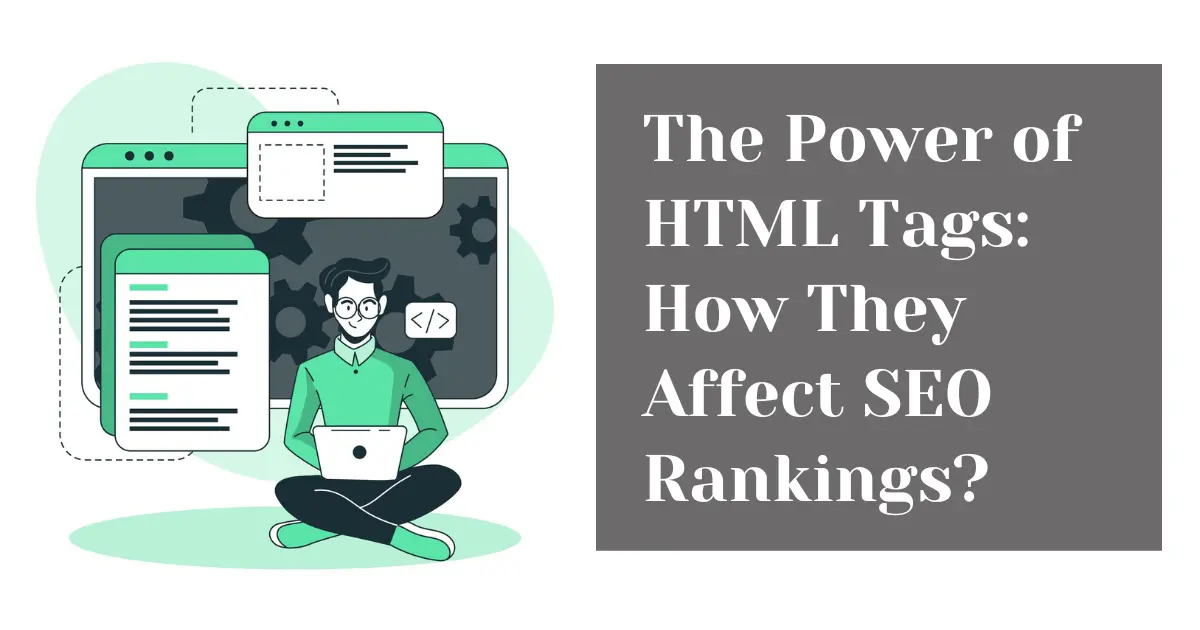HTML (Hypertext Markup Language) is the language used to create web pages. It is a set of markup tags and attributes that define the structure and content of a webpage. HTML tags are the building blocks of web pages, and they provide meaning and structure to the content displayed on a webpage.
What are HTML Tags?
HTML tags are codes that are used to define the content of a webpage. They are enclosed in angle brackets and come in pairs. The opening tag denotes the beginning of an element, and the closing tag denotes the end of the element. The content between the opening and closing tags is what will be displayed on the webpage.
For example, the <p> tag is used to create a paragraph, and it has an opening tag <p> and a closing tag </p>. Anything between these two tags will be displayed as a paragraph on the web page.
HTML tags can also have attributes that provide additional information about the element. Attributes are added to the opening tag and provide information such as the element’s color, size, or link to another page.
Why are HTML Tags Important?
HTML tags are essential for creating well-structured web pages. They provide meaning and structure to the content displayed on the webpage, making it easier for search engines to understand and index the content. Proper use of HTML tags also helps with accessibility, as screen readers and other assistive technologies rely on HTML tags to interpret the content of a webpage.
What are the 10 basic HTML tags?
Here are the 10 basic HTML tags that every beginner should know:
- <html> – This tag is used to indicate the start and end of an HTML document.
- <head> – The head tag is used to contain information about the document, such as the title, description, and meta tags.
- <body> – This tag is used to contain the visible content of the web page, including text, images, and other media.
- <h1> to <h6> – These tags are used to create headings of various sizes, with <h1> being the largest and <h6> being the smallest.
- <p> – This tag is used to create a paragraph of text.
- <a> – This tag is used to create a hyperlink to another page or website.
- <img> – This tag is used to insert an image into a web page.
- <ul> – This tag is used to create an unordered list.
- <ol> – This tag is used to create an ordered list.
- <li> – This tag is used to define each item in a list.
These 10 basic HTML tags are the foundation of HTML and understanding them is crucial for building a website.
Learning HTML tags is essential for anyone interested in web development, as they provide the foundation for creating web pages. With the proper use of HTML tags, you can create well-structured web pages that are both search engine and user-friendly.
What are HTML Tags in SEO?
HTML tags are important in SEO because they provide structure and context to the content on a web page. Search engines use HTML tags to understand the content of a web page and to determine its relevance to a user’s search query.
Here are some HTML tags that are particularly important in SEO:
Title tag: The title tag is one of the most important HTML tags for SEO. It is used to define the title of a web page and appears as the clickable link in search engine results. A well-optimized title tag that accurately describes the content of the web page can help improve the click-through rate from search engine results pages.
<title>This is Title tag</title>
Header tags: Header tags (H1, H2, H3, etc.) are used to create headings on a web page. Search engines use header tags to understand the structure of the content on a page and to determine the hierarchy of information. Using header tags properly can help improve the readability of a page for both users and search engines.
<h1>This is heading 1</h1>
<h2>This is heading 2</h2>
<h3>This is heading 3</h3>
<h4>This is heading 4</h4>
Meta description tag: The meta description tag is used to provide a brief summary of the content on a web page. It appears below the title tag in search engine results and can help entice users to click through to the web page. A well-crafted meta description that accurately describes the content of the web page can help improve click-through rates.
<meta name=”description” content=”Free SEO tutorials”>
Alt text for images: Alt text is used to describe the content of an image to search engines and to users who may not be able to see the image, such as those using screen readers. Including descriptive alt text for images can help improve the accessibility of a web page and can also provide additional context to search engines.
<img src=”img.jpg” alt=”image”>
- Anchor text: Anchor text is the visible text in a hyperlink. Search engines use anchor text to understand the context and relevance of the linked content. Using descriptive and relevant anchor text can help improve the ranking of the linked page for the keywords used in the anchor text.
<a href=”https://www.weburl.in”> SEO Blog!</a>
Conclusion
HTML tags are the building blocks of web pages, providing structure and meaning to the content displayed on a webpage. They are essential for creating well-structured web pages that are both accessible and user-friendly. By learning HTML tags and how to use them properly, you can create web pages that are optimized for search engines and provide a great user experience.
